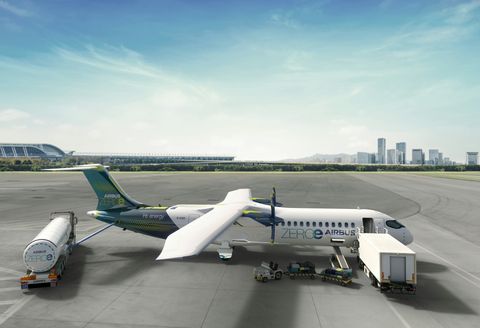EcoPulse demonstrator takes first flight with batteries onboard
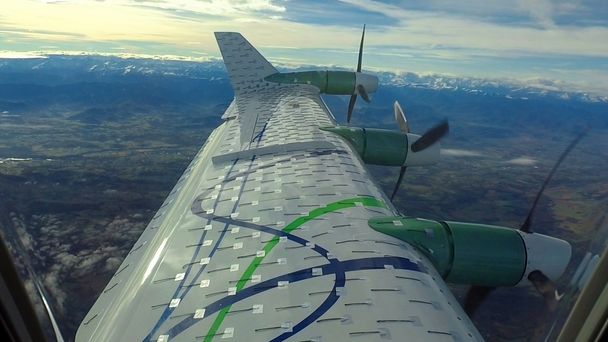
EcoPulse is a distributed hybrid-propulsion demonstrator aircraft co-developed by Airbus, Daher and Safran. Designed to learn and mature the technological bricks of hybrid-electric propulsion systems for future aircraft, EcoPulse reached a milestone when the demonstrator took off on its first test flight.
After a couple of years of travelling between Tarbes and Toulouse on a regular basis to oversee EcoPulse’s development, project leader William Llobregat found himself back onsite in November 2023 with his team, and those of Daher and Safran. The occasion? The first EcoPulse test flight. “This project was launched in 2019,” says Llobregat, a next-generation propulsion architect. “It’s really exciting to have reached the concrete stage of the project where we are flight testing the technologies we have developed.”
EcoPulse first hybrid flight test video
The first flight marks the beginning of an eight-month flight testing campaign of the distributed hybrid-propulsion systems and the associated technologies, led by Daher. A hybrid-electric propulsion system combines a high-voltage battery with a turbomachine equipped with an electrical generator, and the distributed aspect means there are multiple propulsion “pods” spread along the wings.
Hybridisation is an important investment area for Airbus as estimates show that it could reduce an aircraft’s environmental footprint up to 5%. The EcoPulse first flight, with the functional hybrid-propulsion system aboard, thus marks a major, concrete step in advancing the company’s electrification roadmap.
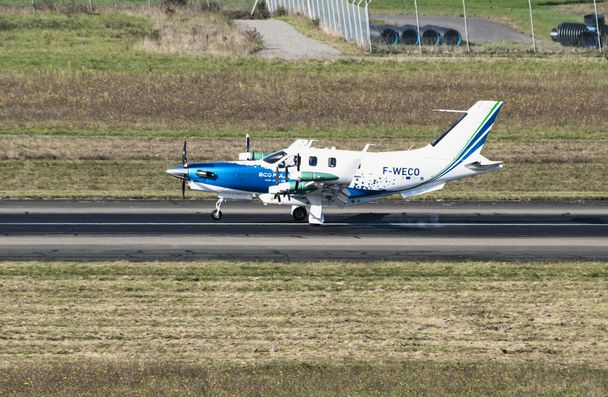
A milestone for hybrid-electric flight
EcoPulse took off for its inaugural test flight from the scenic Tarbes–Lourdes–Pyrénées Airport, nestled at the foot of the Pyrénées mountain range in southwest France. Two experimental Daher pilots were onboard the demonstrator, a modified Daher TBM 900 turboprop aircraft. While take off and landing used the traditional propulsion engine, the hybrid-propulsion system was activated at cruising altitude, where the pilots spent around 20 minutes running testing sequences on the battery while it was powering the flight.
All aspects of the different systems, from the way the aircraft responds to the way the power sources are used, were previously simulated digitally and tested by the pilots on the ground. This theoretical data can now be compared with the real flight test data to help the teams better refine the simulator and improve the performance of the different innovative technology components.
Which technology components, you may ask? Airbus, Daher and Safran divided the responsibilities of developing the different EcoPulse technologies based on their complementary expertises. Airbus’ contributions to the demonstrator are the development of the high-energy-density battery that powers the propulsors; the aerodynamic and acoustic integration of the distributed-propulsion system; and the development of a flight control computer system.
“Technological demonstrators like Ecopulse play a key role in advancing our industry's decarbonisation roadmap,” says Llobregat. “The demonstrators themselves are not intended to ever enter into service, but they allow us to evaluate, mature and validate individual technologies that can then be integrated into future aircraft.”
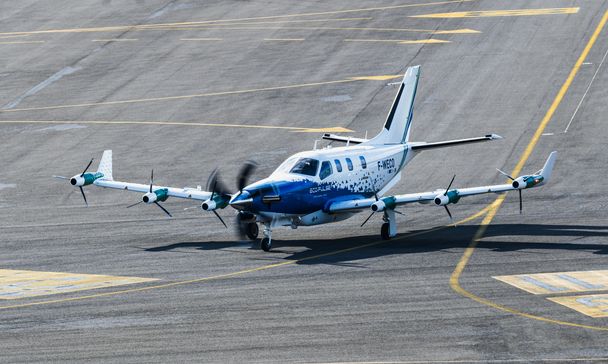
This voltage is a first for the aerospace industry and we hope to one day integrate this technology into commercial aircraft.
William Llobregat, EcoPulse project leader and next-generation propulsion architect
Airbus brings expertise to key EcoPulse components
Of Airbus’ three main technology contributions, the battery system may be the most groundbreaking. As automobile batteries for electric vehicles are too heavy and bulky to have aerospace uses, and those batteries already in use on aircraft are typically low-voltage, the high-voltage battery on EcoPulse had to be custom designed by Airbus Defence and Space. “The battery system is able to achieve 800 Volts DC and deliver up to 350 kilowatts of power,” says Llobregat. “We are pioneering new voltage levels for the aerospace industry and we hope to one day integrate this technology into commercial aircraft.” The battery is powerful enough to drive up to six electric propulsors.
Airbus also modified the shape of the aircraft to assess the performance impact of having a distributed propulsion system. “We have separate, smaller sources of propulsion distributed across the wing. This means that you could theoretically increase the thrust on only the outboard engines, or just the centre ones. We can then assess how these differences impact flight performance, which is very valuable data,” explains Llobregat. “Using asymmetrical thrust to control the aircraft is a totally new technology that is only possible to test out because we are using an electrical system that has better dynamic response than traditional jet fuel engines.
The creation of a flight control computer system also fell to Airbus. The software links all the flight control systems and connects them to the electrical engines, monitoring the propulsion. It optimises thrust and minimises the wingtip drag effect, and it also takes into account an extra control stick in the cockpit as well as an emergency shutdown button that immediately returns the demonstrator to a normal aircraft with a native engine.
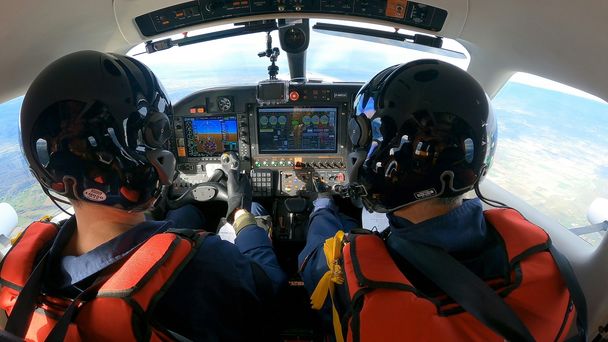
Laying the groundwork for battery-powered flight
Flight testing of the demonstrator will last until mid-2024 at the latest, and will include up to 30 test flights. The ultimate goal for the teams involved? That each company will walk away from the project having achieved their respective objectives. “This partnership between Airbus, Daher and Safran – three French companies – worked so well because it was founded on our common ambition of paving the path to decarbonisation for the European aerospace industry,” Llobregat says.
As one of Airbus’ primary project objectives was testing a new high-voltage battery configuration in flight, the testing campaign is the exciting result of four years of work. However, the development of the battery system stretches back even further, with the EcoPulse battery benefiting from several years of previous research and prototyping at Airbus and Airbus Helicopters. The flight testing of this state-of-the-art battery system – lightweight and compact, with high voltage and energy density – will provide valuable data to support Airbus’ goal of applying hybrid propulsion systems to future aircraft or helicopters. While EcoPulse may be a small aircraft, its potential impact on the aviation industry is therefore huge!

